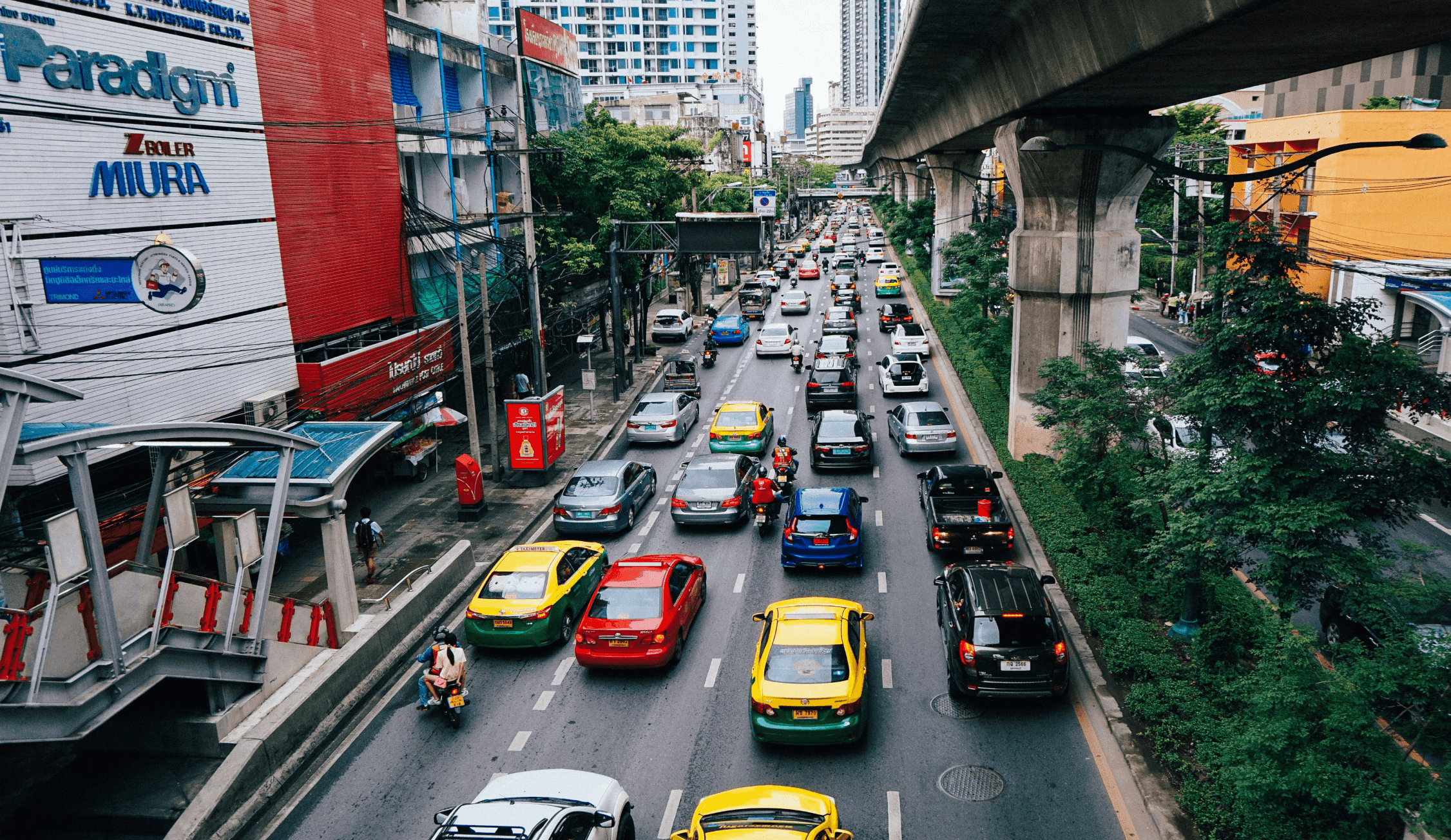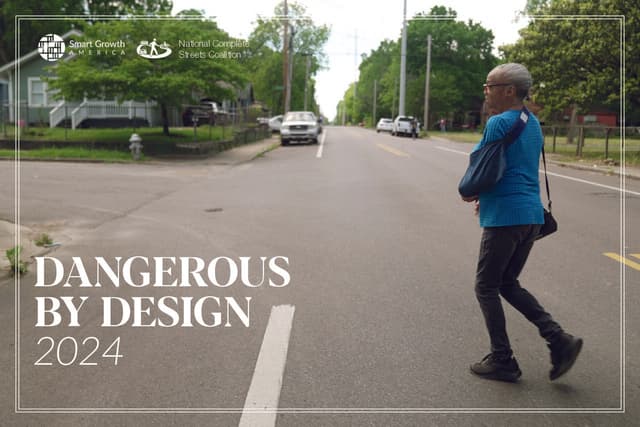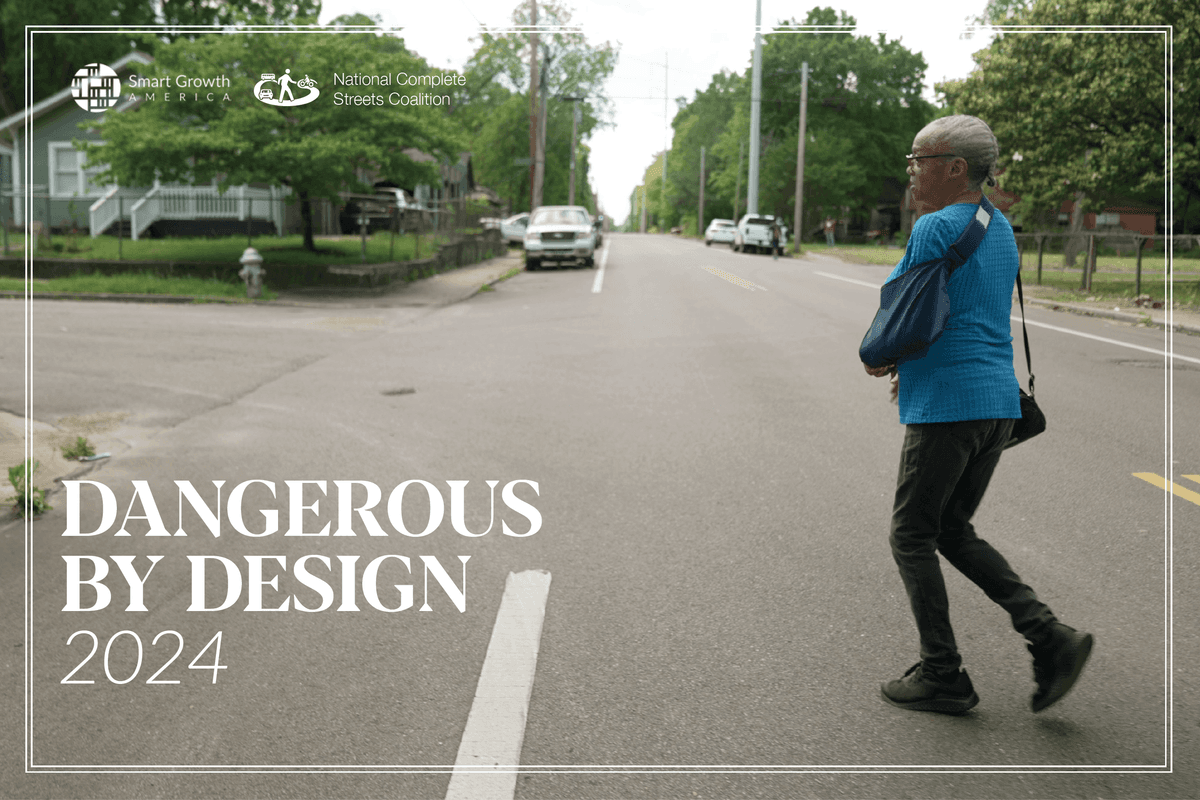
Signature reports
Dangerous by Design: An urgent call to prioritize pedestrian safety
Uncover the urgent truths behind America’s rising pedestrian fatalities and explore transformative solutions to create safer, more inclusive streets for everyone. Join us in reimagining our roadways—prioritizing people over cars to protect lives.
The ranking levels
Pedestrian safety is a growing concern across the United States, with an alarming increase in pedestrian fatalities over the past decade. This report highlights the most dangerous metro areas and states for pedestrians, based on a detailed analysis of fatality rates from 2018 to 2022. The data underscores the critical need for comprehensive safety measures, urban planning, and policy interventions to protect vulnerable road users. Here are our rankings:
Ranking the most dangerous metro areas
Ranking the most deadly states
Ranking the most deadly congressional districts

© 2025 Smart Growth America. All rights reserved
Site By3Lane Marketing








